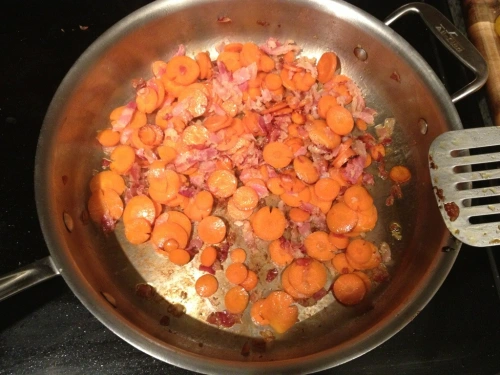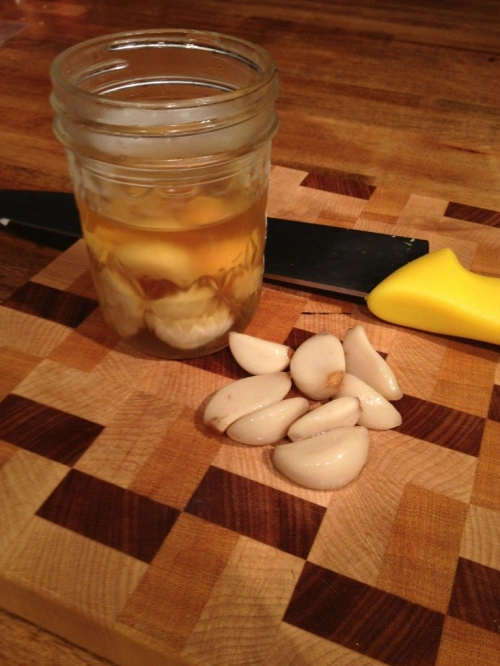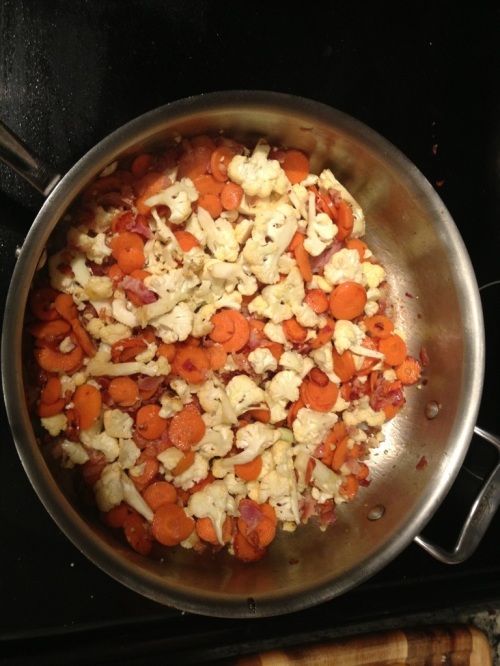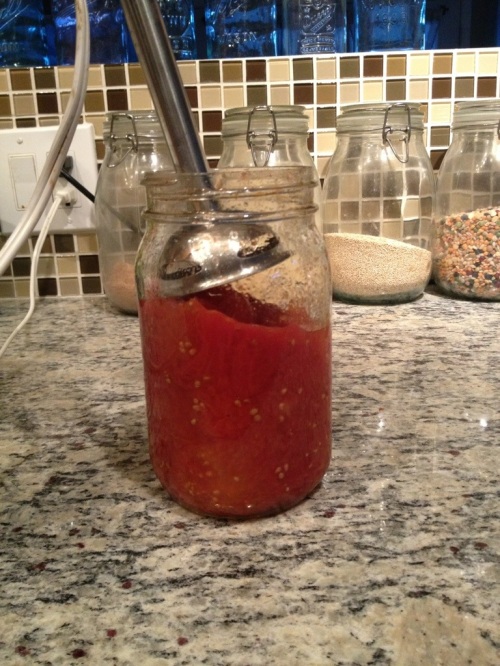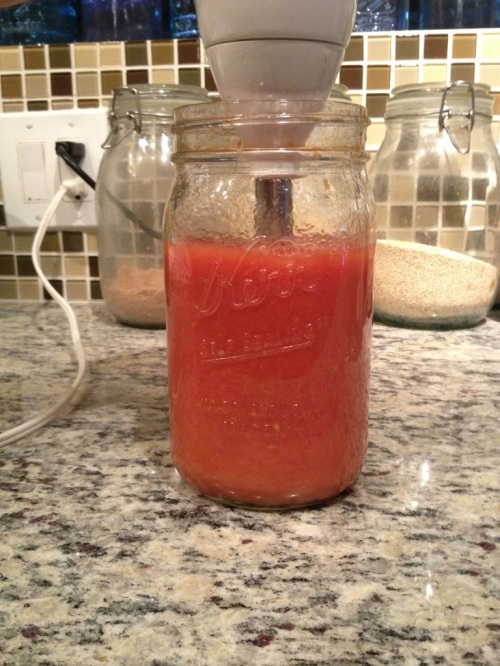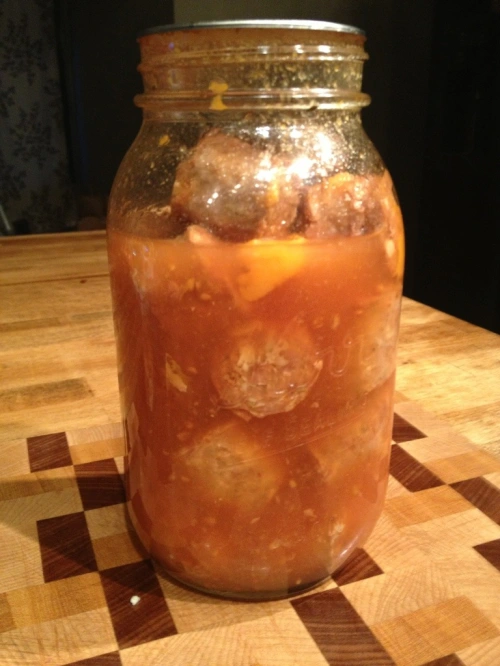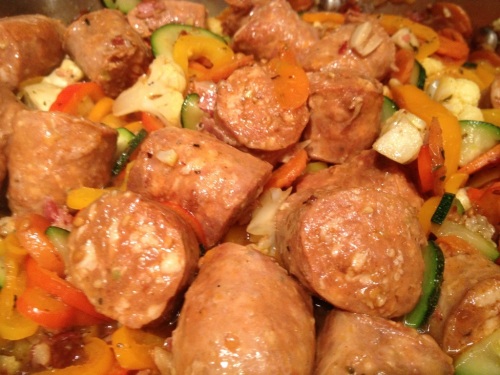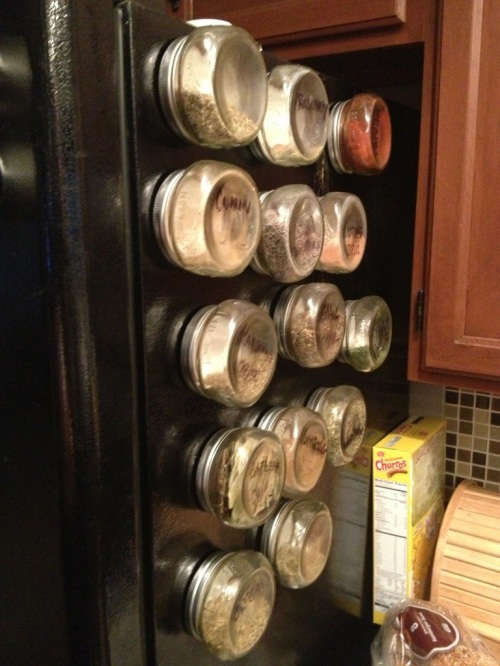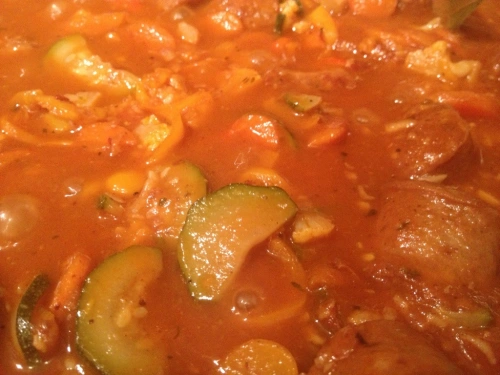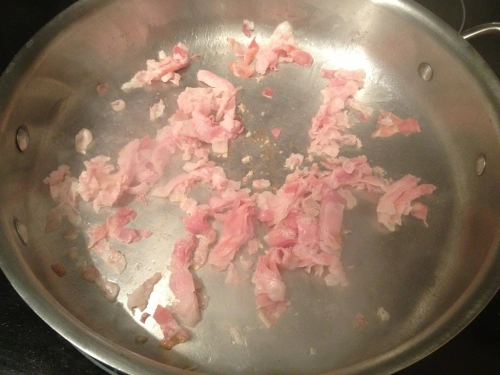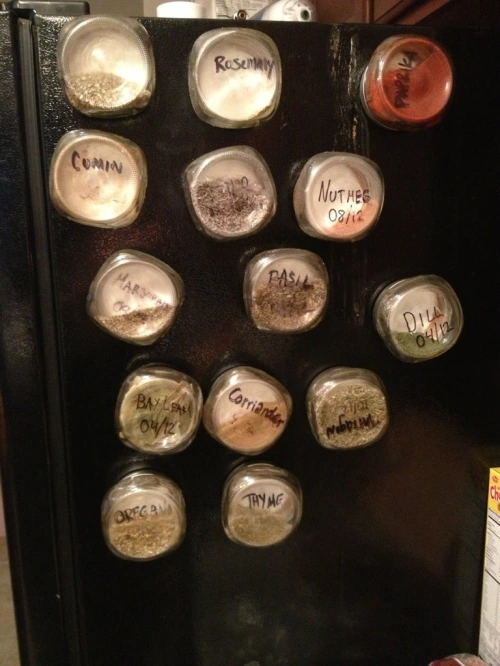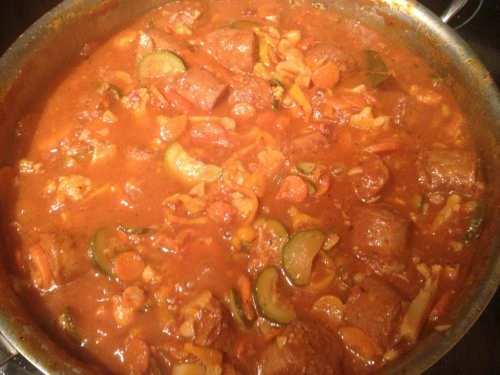A lot of people I meet and talk to are really interested in getting in to canning, but are also scared to try it. I think this is one of the easiest recipes to get you into it.
Before you start, you’ll need a few basic supplies. It’s an initial investment, but most of it will not need replacing or replenishing.
Start with a water bath caner. You can go out and buy pot, or, if you ave stock pot (which any self respecting cook does) you can just use that.
You will need canning kit like this kit from Amazon. You can get these kits almost anywhere. Some contain more parts, and some less. What’s really important is the jar lifter and the funnel. I don’t use the magnetic lid lifter, the jar wrench or the tongs. Some kits contain a little wire rack for the jars to sit in. That’s nice, but not necessary. But truth be told, if you have a wide mouth funnel, and can figure out how to get hot jars out of hot water, you really don’t need any of this.
You’ll need mason jars, lids, and rings. If you weren’t aware, all regular mouth jars use the same size lids and rings. All wide mouth jars use the same size lids and rings. All of them. 1/4, 1/2 pint, pint, quart, whatever. It’s one of the few standardized things left in my life. This is beneficial for a few reason. 1st, you only buy 2 sizes of lids. Ever. 2nd, the rings are re-usable, and don’t need to be on the jars once they seal. So you seal your jars, remove the rings, and use them on the next batch. The jars are also re-usable. The only reasons you ever need to buy more jars once you start are that your jars are all full, or you’ve given away too much of you stock.
Jars are available at any grocery store, and Walmart and Target during the summer/fall. But, they are also available at Goodwill. And Saturdays are 1/2 price days. Which makes you average mason jar about $0.40. Remember, lids ARE NOT reusable, and you have rings at home. So don’t pay more for a jar with a lid and ring. Just buy the cheap jar. All jars will be sterilized prior to use, so don’t worry about buying food jars at Goodwill.
For most jams and jellies you will also need Pectin. It can found in groceruy stores. It’s sold under the names Fruit-Jel, Fruit Pectin, Sure-Jell, Can-Jel, and many others. It’s all the same stuff. I pay $1.69 for Kroger Brand. It works just as well as the $3 Ball Brand.
Canning is a great way to save money. You buy things in season, or in bulk, when savings are good, and then preserve them for use when the price is high. Right now, Strawberries are less than $1 a pound almost everywhere, because Florida just had their season, and they are abundant. This is a great time to make strawberry jam, preserves, or just can them.
Now on to the good part. Actually making the jam.

Strawberry Lemon Jam:
- 1/4 cup thinly slice lemon peel (about 2 large)
- 4 cups crushed strawberries (about 4 1-lb containers)
- 1 1.75-oz pkg Fruit Pectin
Preparation:
Put water in your pot. Remember that you need 1-2 inches of water above the tops of your jars. But also remember that your sealed jars will displace their own volume in water. Place either your wire rack, or a dish towel in the bottom of your pot. Put your empty and open jars and lids in the water. Heat.
Directions:
Crush your strawberries, one pound at a time, with a potato masher. Consistency is up to you. I like larger chucks of strawberry in my jam, so I do this step roughly.

Combine the 4 lbs in a large pot.
Cut the ends of the lemons. Cut the rind off the lemon in strips from end to end. Now, place the rind zest side down on the cutting board. Using a long sharp knife, fillet the pith off of the zest. You want to remove as much pith as you can, without damaging the zest. Work in slow thin layers.

Rind removed from the lemon. Now to get that pith off.
When the pith is removed, stack the layers of zest. Then slice them into the thinnest strips you can. Place the strips of zest in a small pot of water, and heat to a boil. Boil for 5-10 minutes, until the zest is soft. Drain the zest, and add it to the strawberries, along with 1 tablespoon lemon juice (from the zested lemons), and the package of pectin.

Heat over high heat, stirring constantly. The mixture must be heated quickly, or the pectin will break down. Of course, high heat can cause burning. So crank the heat up, and don’t walk away! Just keep everything moving with a silicon spatula.
Heat the mixture to a full boil that can not be stirred down.

Add all the sugar at once, and stir in. Continue to heat on high and stir constantly. Constantly! I can’t stress that enough. Don’t leave. Not to change the channel, not to use the bathroom, don’t even answer your phone. Reheat the mixture to a full boil. Be aware that at this point, this stuff is hotter and stickier than napalm. It was also nearly double in volume, so a large pot is a must.

It should basically look like a volcano on your stove.
Keep it boiling at a full boil for 1 minute. Then, remove from heat.
In the mean time, keep an eye on that canning pot over there. You need to pull the lids out prior to the water boiling. The hot water needs to soften the adhesive on the rim of the lids, but boiling water will compromise it. Keep the jars in the water through boiling, and don’t pull them out unitl just before you’re ready to use them.
Skim any foam off of your jam. It’s just not that tasty.

Using your funnel and ladle, fill each jar with your jam.

Leave about 1/4 inch “head space”, that is, empty space at the top of the jar.

Put a lid on each jar. Place a ring over the lid, and finger tighten. Don’t crank down on it, air needs to get out.
Place the jars in the boiling water, ensuring that once all the jars are in, you have 1-2 inches of water on top of the jars. Return the water to a boil, and boil for 10 minutes.
Here’s a bit of the techy side I’ve learned. You boil the fruit, killing bacteria. You boil the jars, killing bacteria. You added some lemon juice, increasing the acidity, which bacteria isn’t fond of. And now, by heating, you increase the pressure in the jars. That force that head space air out of the jars. Watch, you’ll see the bubbles coming from the jars. This creates a bit of a vacuum in the jars. And, voila, canned. Preserved. Safe for months. Also, delicious.
After 10 minutes, remove the jars. Place them somewhere where they won’t be moved for 24-48 hours. This gives everything time to settle and seal. After that, remove the rings from the jars (gotta re-use them, right?). The lids are on there tight, so don’t worry.

Make yourself some sweet labels. If you’re going to give them away as gifts, include the ingredients, and a mad on, or use by date. If you’re really going to get in to canning, labels are a must. You need to know what’s in that jar, and when you made it.

Plus, your pantry starts to look kinda cool when everything has your own label on it.

Domestic Preparedness
Canning has a lot of benefits. You save money. You know what you’re eating. And it’s one step closer to off the grid independence. I’m very much looking forward to the summer and fall when I can start canning my own grown vegetables.
Future caning recipes wont be nearly this detailed and tedious. But I was trying to make this an intro post for beginners. I hope you enjoy this jam on some homemade bread or English muffins in the morning. The sweet strawberries, with the bright burst of lemon zest is the perfect thing to coax me out of bed int he morning.
